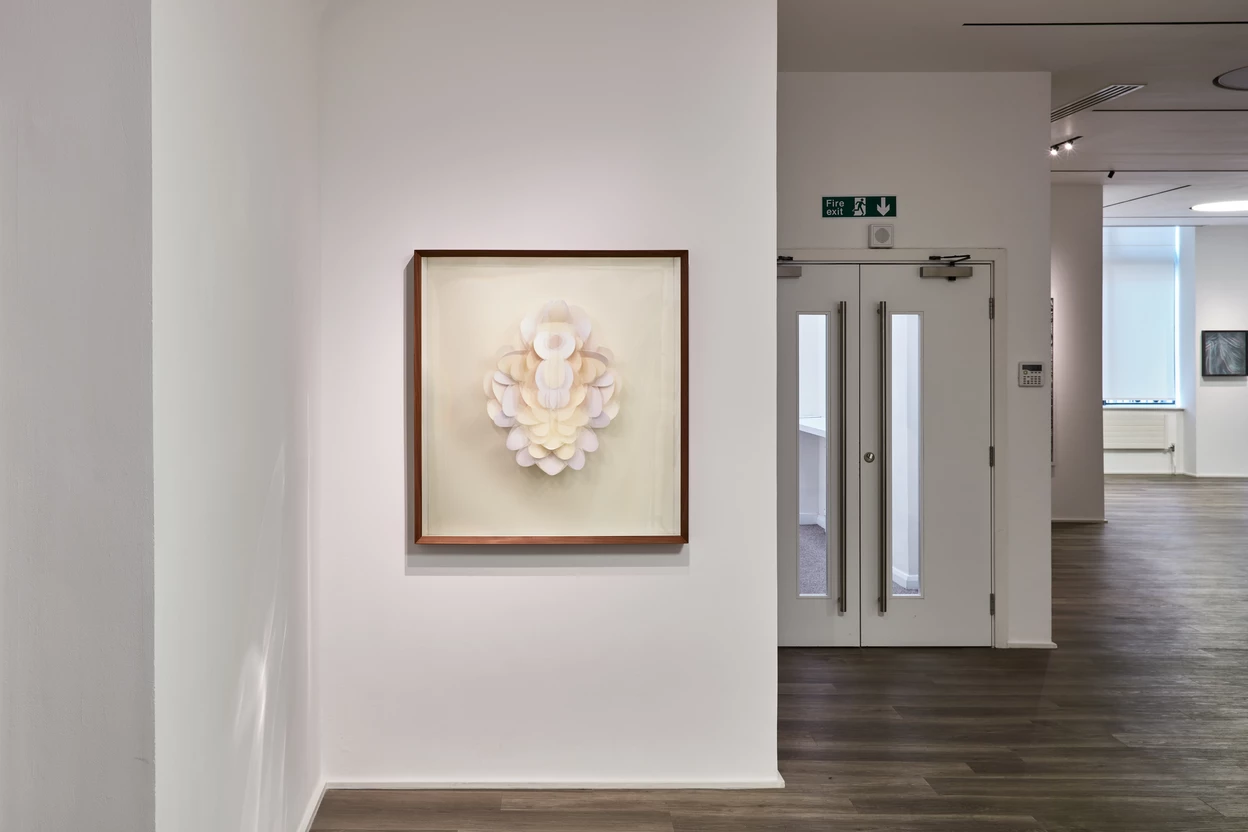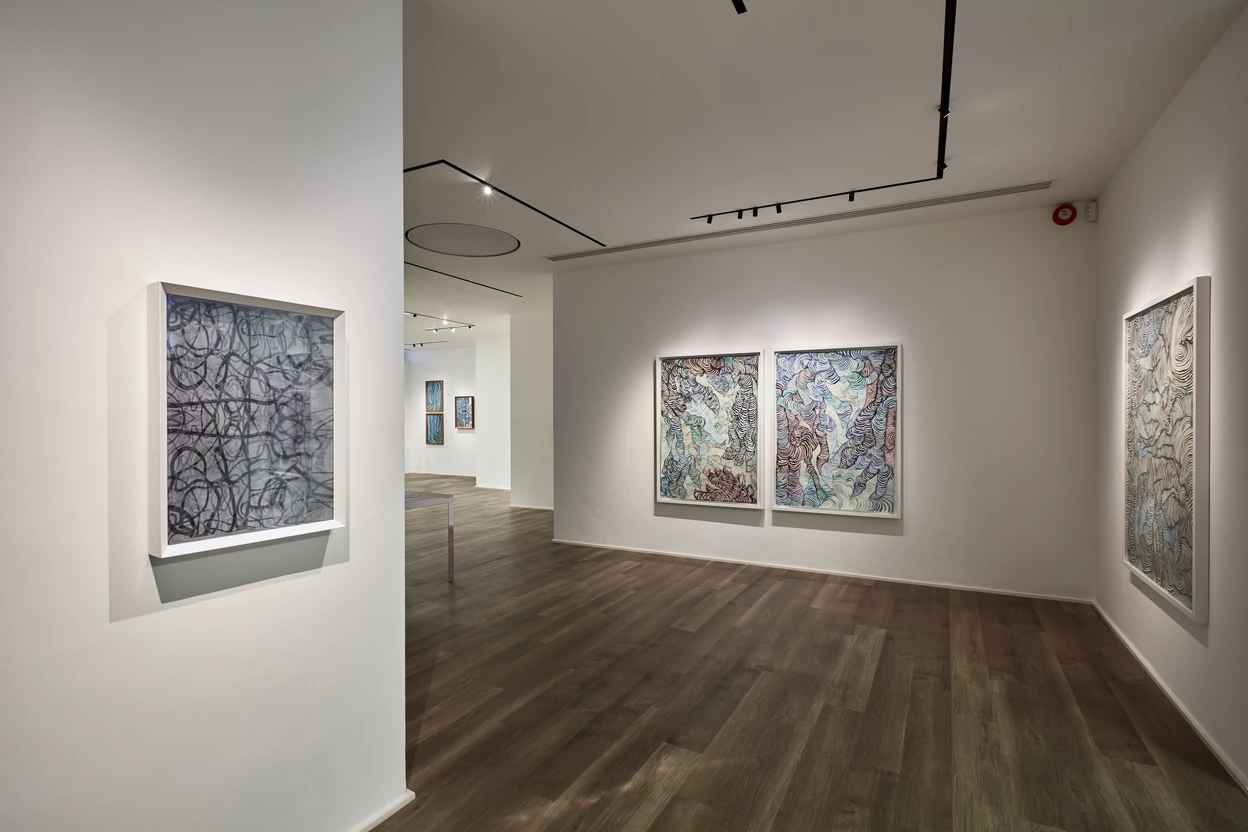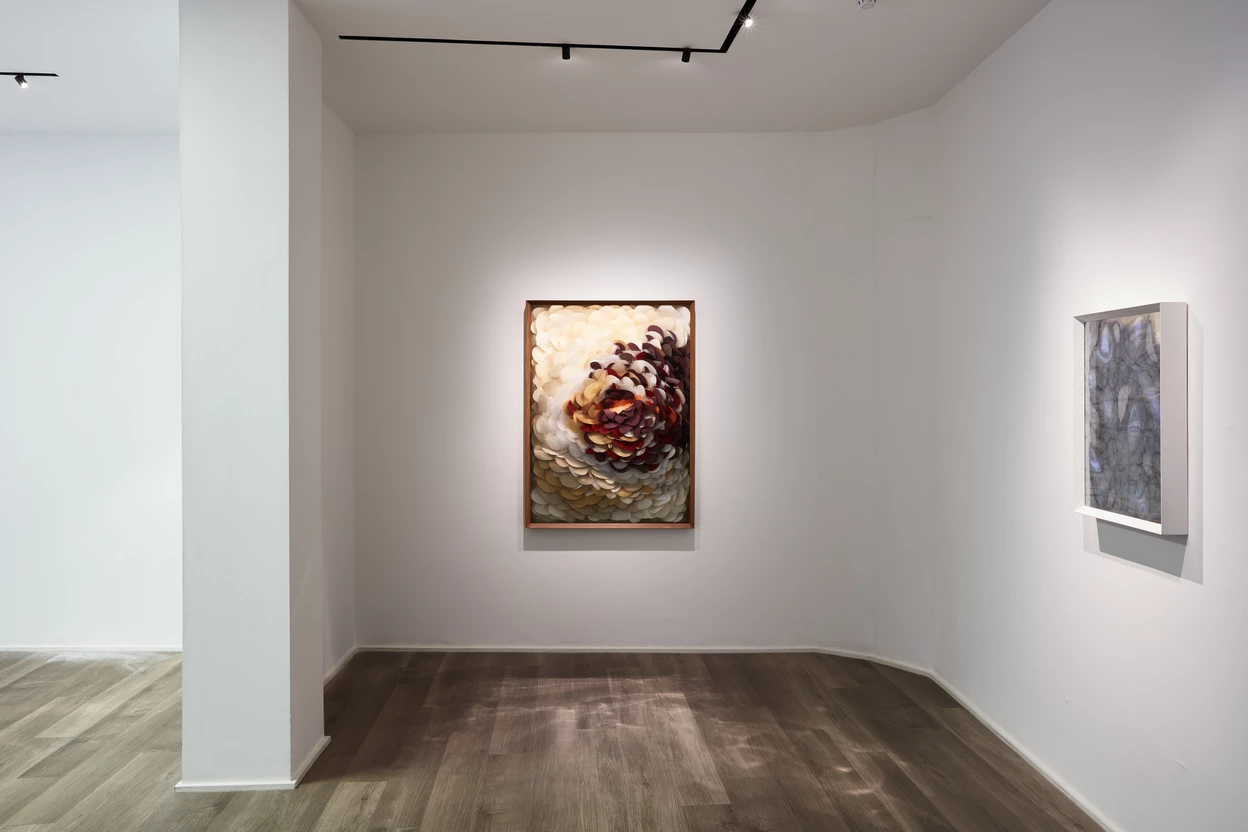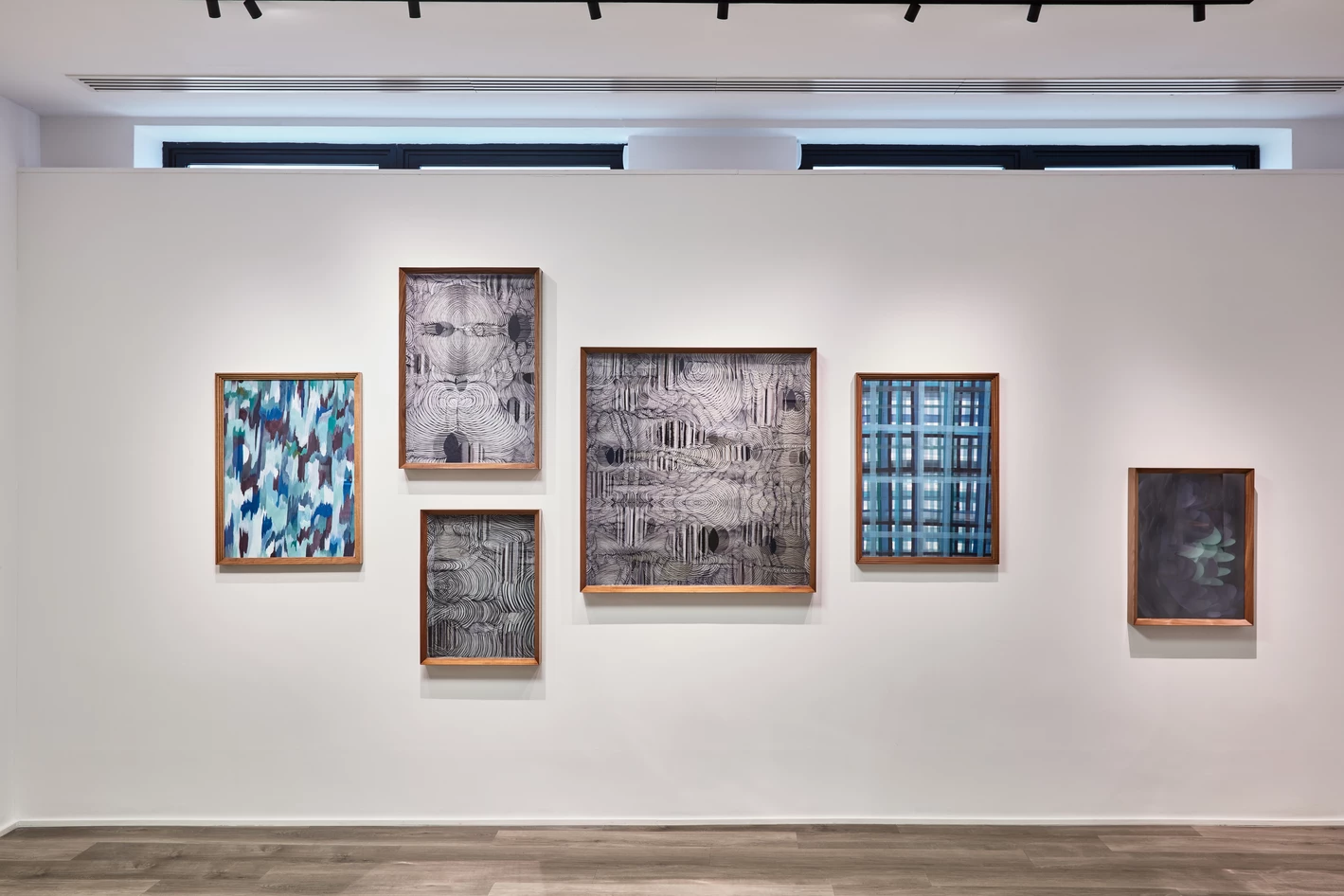The work of Maurizio Donzelli (b. Brescia, 1958) focuses on mark, drawing and ornament as hub around which all other tools of expression seem to gravitate. These characteristics are visible both in the realization of the work and in the ways in which the latter is exhibited.
The first-ever solo exhibition in the UK dedicated to Donzelli’s oeuvre, which will be held at Cortesi Gallery, presents a series of works from the last two years of his artistic production, in particular, a selection of acrylic drawings and “Mirrors”.
Whether Donzelli’s drawings take the form of watercolour on paper, acrylic on paper or acrylic on silk, they are above all a track, a tracing, a rhyzome. If they can be compared to a path realised with the mark, this path is not prepared according to any pre-ordained scheme. If anything, is the point of departure that indicates the direction, because what interests the artist about drawing is above all the beginning, “the image as revelation”, as he declared.
From that first moment – which seems to allude to the biological development of life forms – the artist becomes the conduit for a stream of sensation, guiding and following a path and inner cadence that leads to the formation of the work. The latter should be seen as an articulation of marks; abstract, but of organic origin, as if they were a “germination” that has never really come to an end.
Donzelli pursues a certain fluidity, a continuum of sensations that will lead past the threshold of control through the symbiosis between body, materials and surface in his drawings.
As in his drawings and his “Mirror” works as well, Donzelli tries and clearly manages to lose control over the final outcome of his aesthetic undertaking. In the former, a temporary absence of self is achieved through a se
nse of “dilation” manifested in the fluidity of the relationship with his materials and movement, in the way the work unfolds; in the “Mirrors”, on the other hand, this loss seems to be brought about in advance. Taking an image that may be a new painting, a manipulated photograph of a previous work, or a three-dimensional collage, Donzelli applies a prismatic lens that covers the entire original image, and places it inside a wooden box, also delimited by a frame. Since the artist is forced to assemble the work from behind, the final outcome of this superimposition, this merger of image and lenticular glass, is revealed only when the artist turns around the completed work. In the “Mirrors”, the reflecting mirror is actually an image while the viewer is moving, almost as if the works were having an independent life of its own. Like afrustrated Narcissus betrayed by his own expectations, the viewers of the “Mirror” look into it and see their own image in relation to their surroundings, but then find they are being “looked at” by the work that was supposed to reflect them.
Through the drawings and the “Mirrors”, Donzelli’s practice creates a strong sense of “overflow,” of pouring past the boundaries of space and the surface assigned to them, as if they had difficulty remaining within the area marked off by the paper, the frame, the fabric. As usual, it is in the singularity of the exhibition but above all, in its context that this continuous flow finds a temporary rest and balance.




